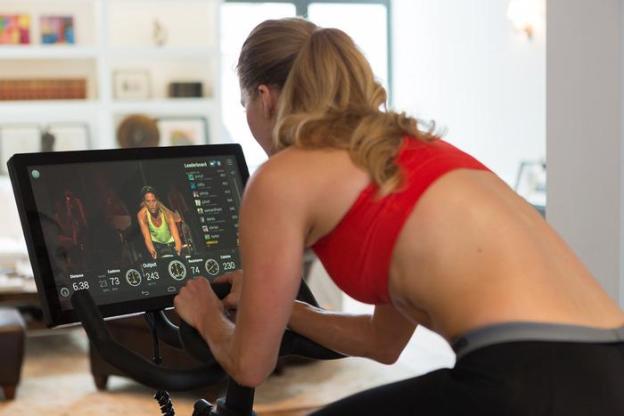
Raising nearly 60 percent of a $250,000 funding goal on Kickstarter in the past two days, a company called Peloton has combined an at-home, stationary exercise bike with the interactivity of a cycling class that’s held at a gym. Called the Peloton Bike, the development team has mounted a 21.5-inch touchscreen tablet directly in front of the handlebars. Streaming video content over a home’s wireless network, the tablet delivers a live studio cycling class to the user in order to provide the motivation needed to workout effectively.

For cyclists that have a competitive streak, users will be able to compete in real-time assuming they are attending one of the live classes. However, there’s also on-demand options for anyone that can’t make the start time for a live class.
In order to encourage Peloton owners to exercise regularly, there’s an achievement system built into user profiles. Users will be able to earn badges in addition to viewing statistics on performance over time. This includes speed, distance, calories burnt, heart rate, resistance and other factors. Users can follow each other as well, ideal for meeting up with riding partners for specific classes. Progress can be shared with friends or be kept completely private from other users. If users prefer a more casual ride without a class, the development team is planning on integrating Netflix and Hulu Plus into the interface.

Regarding hardware, the LED panel is sweat resistant in order to protect the electronics. The touchscreen tablet is powered by Android 4.1, a Texas Instruments 1.5 GHz dual-core processor, 1 GB of RAM and 16 GB of flash storage. Peloton has also included Bluetooth and ANT+ radio connectivity for wireless speakers and headphones as well as heart rate monitors. Within the bike’s framework, Peloton has opted for a magnetic resistance system to cut down on moving parts. The company also opted for a belt drive over a chain to avoid oil or grease maintenance.
According to the details on the Kickstarter project page, the development team has a working prototype ready to go. Assuming the project is funded, the $250,000 will be spent on machine manufacturing. The target launch window for users in the United States is November 2013, but international users will have to wait until January 2014. Investing in the Peloton Bike is expensive compared to other Kickstarter projects. At the moment, the cheapest version of the bike is $1,500 for a handful of backers. There’s no retail price set for the bike at this time.
With the Kickstarter package, users will get access to one year of unlimited free classes. After that year, Peloton will charge Kickstarter backers a maximum of $39 per month ($468 per year) to attend an unlimited number of classes. However, there will also be a free tier available with fewer options. As with all Kickstarter projects, be aware that manufacturing issues often push back the delivery date of the product weeks or even months beyond the promised launch month.


